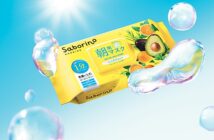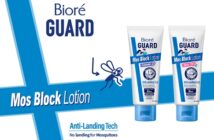Discovered in 1907 by the Japanese microbiologist K. Saito, kojic acid recently gained worldwide popularity for being a natural solution to common skin problems, especially those relating to pigmentation. But while more and more products are being infused or made with this chemical, is it really something we should give our families? In this article, we will talk about the uses, the benefits and the safety of kojic acid.
What is kojic acid?
As pointed out by Web MD, kojic acid is a more recent remedy for treating pigment problems and age spots. While it was discovered in 1907, it was only in 1989 when it was developed for commercial use. Kojic acid is a chelation agent produced by various species of fungi especially Aspergillus oryzae, which is commonly called koji in Japanese. This chemical is a by-product of fermented soy sauce and rice wine.
How does it work?
According to an article by New Beauty, kojic acid treats skin colour disorder by blocking tyrosine from forming. When tyrosine activity is blocked, the production of melanin is also prevented. Melanin is a naturally occurring pigment that is found in both humans and animals and is responsible for the colour of our hair, skin and eyes. That being said, the reduced production of melanin may have a lightening effect on the skin.
Uses of kojic acid
Because of its ability to solve skin colour problems, kojic acid is often infused in various cosmetic products such as creams, sebum, lotions and soaps. Aside from skin lightening, Medical News Today’s article emphasized that kojic acid can be used to treat melasma or the darkening of the skin due to pregnancy and decrease the appearance of scars. PrettyMe’s Kojic Acid Soap writeup also mentioned that kojic acid deeply cleanses and exfoliates your skin to unclog pores, reduces the emergence of breakout and eliminates blackheads and whiteheads.
While kojic acid is primarily used in various cosmetic products, it’s also used as a natural food additive that prevents browning due to enzymatic oxidation. Kojic acid and its derivatives are also used in medicine based on its antimicrobial, antiviral, antiparasitic, pesticidal and insecticidal properties, as per an article by Science Direct. Additionally, the antifungal benefits of kojic acid prevent and treat certain fungal infections such as athlete’s foot and yeast infections. Moreover, its antimicrobial properties help in the prevention of common skin diseases.
Is kojic acid safe?
The Cosmetic Ingredient Review Expert Panel certified that kojic acid is safe to use in cosmetics when the concentration is kept at one percent. However, it’s important to remember that everyone’s skin is different, so make it a habit to buy products from reputable companies that have undergone the screening of your country’s food and drug administration. You can also opt for handmade cosmetics such as those from Lush, which are made with fresh and organic components.
An article by the Healthline wrote that the most common side effect of kojic acid is contact dermatitis. Contact dermatitis manifests itself as redness, irritation, rashes, itchiness or pain and discomfort. This skin condition is prevalent among people who have sensitive skin. Long-term use of kojic acid may also make the skin more susceptible to sunburn.
As with any product, excessive consumption and too much exposure can certainly lead to unwanted side effects. To make the most out of the numerous benefits of kojic acid, make sure that your family use kojic acid-infused products moderately.




